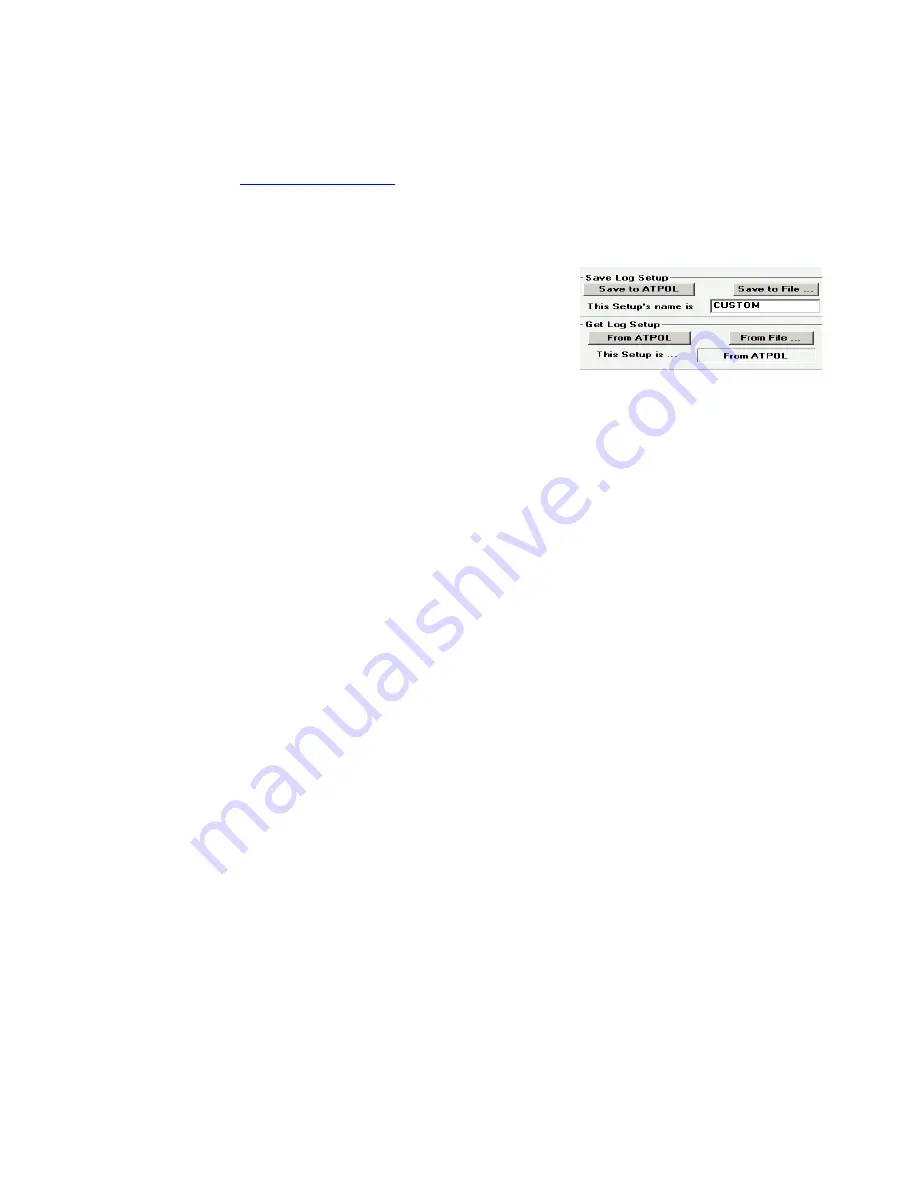
74
Setting Measurement Modes
The measurement modes and how to check and modify them have already been covered earlier in the
manual. Refer to the
Saving and Retrieving Data Setups to File or ATPOL II in PSM
When you create a customized data setup, it is usually a good
idea
to save the setup to a file. To do this, click on “Save to File”
and give it a filename. A good practice is to give the setup a
name that will be displayed. The example says “CUSTOM”, but
a typical one might be “Motors”. The name can only be eight
characters long. Although this name that is embedded into the
setup is limited to 8 characters, the filename that the setup is stored under can be of any length that is
acceptable to Windows. To load the setup into ATPOL II
, click on “Save to ATPOL II”.
To retrieve a setup file, click on “From File” and select the specific setup you wish to use. To retrieve
the setup presently in a connected ATPOL II
, click on “From ATPOL II”. When the Data Setup menu is
first entered, the setup that is shown is the setup from the connected ATPOL II. If no ATPOL II is
connected, the initial setup is the “Default” setup. The default setup can always be recovered by
clicking on “Defaults”.
Loading Data Setups from the Memory Card (SD Card)
There are times that it is useful to load a data setup into the meter from the memory card (the SD card).
Examples include:
-
re-loading the setup into the meter to be sure it is correct
-
loading different setups as you move from location to location.
To load a data setup into the meter from an SD card, load the data setup file onto the SD card in an
accessible place. Data setup files end with the file extension “.stp”. The meter can detect these files if
they are located in either the root directory (the highest level folder on the card, such as “F:/”) or in a
directory off of the root that is named the same as the serial number of the meter. For instance, a
meter with
serial number 12345 can detect data setups that are in the root directory (e.g. “F:/”) or the
serial number directory (e.g. “F:/12345”). To detect a data setup on an SD card, press the [Setup] key.
It will ask if you wish to load a setup from the memory card. Press [Yes]. It will then look in the serial
number directory for data setups. The friendly name of the setup will be displayed. If you want to load
the setup, press [Yes], otherwise press [No]. If there are no data setups in the serial number directory
or you do not accept any of them, it will next look in the root directory to see if there are data setup files.
It will then ask if you wish to load any of them. If there are no data setups in the root directory or you do
not accept any of them, it will ask again if you wish to load a data setup from the memory card.
This functionality makes it easy to load multiple setups onto an SD card to support a test plan including
multiple locations and involving multiple meters.
Saving Data Setups to the Memory Card (SD Card)
It is beneficial to store a copy of the present data setup onto the SD card to document how a monitoring
session was set up. This is done automatically when an SD card is installed. Each time monitoring
Содержание ATPOL II
Страница 109: ...109...






























